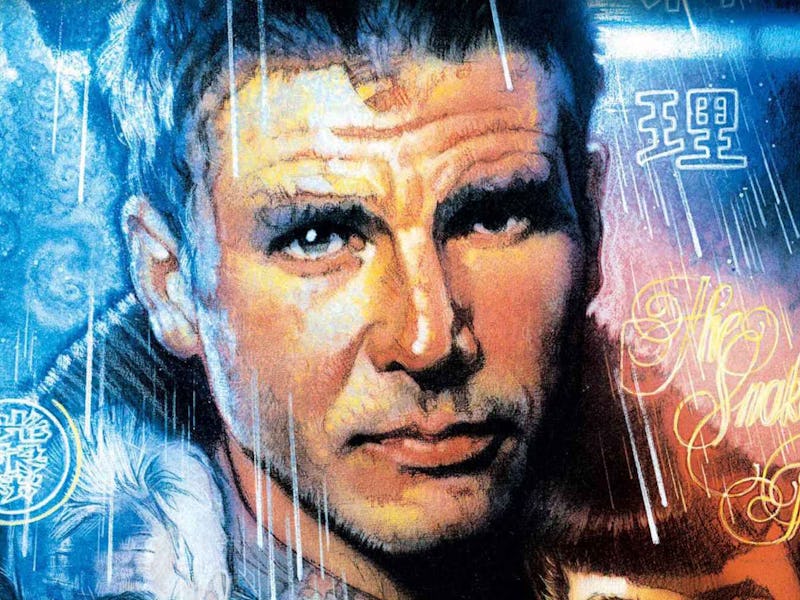Which Version of 'Blade Runner' Should I Watch?
Let's figure out where to start with the five available versions of Ridley Scott's sci-fi classic.

Part of the reason why director Ridley Scott’s 1982 film Blade Runner is so beloved is because of its versatility. It remains elusive and seemingly ever-evolving. But with a handful of different cuts of the film available, it’s difficult to decide which one, if any, is the definitive version.
When he made the original film, Scott had just come off the mega-hit Alien, which also redefined the sci-fi landscape of the late 1970s and early 1980s. But that didn’t stop movie studio Warner Bros. from second-guessing Scott’s dense and groundbeaking neo-noir sci-fi film. The various meddling from studio — before and after shooting — created a variety of different versions. Now that it’s getting a big-screen sequel, Blade Runner 2049 in October 2017, it’s worth trying to figure out which version of the original film to watch. Here’s your guide to picking the right cut.
The Workprint
Forgive us for including this one, because it’s all there in the name — it’s a workprint, not the actual movie. This version was shown in the early ‘80s without Ridley Scott’s participation, and was essentially used to gauge the audience’s reaction to what the studio thought were Scott’s shortcomings with his weird expansive sci-fi odyssey.
It is appropriately rough, featuring a different opening title sequence and opening crawl that explains exactly what a replicant is but not a blade runner. The infamous unicorn dream sequence is missing when Deckard mopily twinkles on his piano at his apartment, and Deckard has a voiceover during villainous replicant villain Roy Batty’s death. It’s the only such narration in this version and gives it an abrupt omniscient touch. Instead of an end credit sequence, the words “The End” are splayed across the screen without composer Vangelis’s distinct “End Title” music after the ambiguous ending. In all, it’s an uneven but playful version precipitating better ones.
The Theatrical Cut
Weirdly enough, home video viewers couldn’t watch the 1982 theatrical cut until it was released when the 5-disc Ultimate Collector’s Edition package came out in 2007, maybe because Scott objected to the studio meddling that fundamentally changed his artistic vision.
The most notorious inclusion in the theatrical release is Harrison Ford’s expository voiceover narration that some say he purposefully bombed in delivering because of its obvious nature. Detractors think it takes away from the immersive, hard sci-fi approach to the film that let you figure it out as it went along, though it does offer up some information you couldnt even get while watching the movie. It makes the meandering plot make sense a bit more.
Also included is a completely different ending — not filmed by Scott — in which Deckard and Rachael drive away together with voiceover explaining that she’ll live beyond the normal four-year replicant lifespan. It’s all just a bit too obvious and neat for a prophetic sci-fi movie about the post-apocalyptic future.
The International Cut
Blade Runner’s U.S. release was rated R for violence and nudity, and if you want a bit more of that then by all means press play on the International Cut. For whatever reason audiences outside the U.S. love their extended scenes of gratuitous replicant mayhem. This one is basically identical to the Theatrical Cut save for three bits of replicant-on-human violence and vice versa, including one scene where Batty crushes Tyrell’s head and pokes one of his eyeballs out with his bare replicant hands.
The Director’s Cut
This one is a bit of a misnomer, but like the Workprint, it’s partially responsible for spurring a new, perhaps the definitive version.
Warner Bros. apparently screened the Workprint without Scott’s input after discovering a semi-pristine version in the early ‘90s. Interest in the Workprint inspired Warners to move forward on an updated version of the movie with Scott’s involvement along with a film preservationist named Michael Arick. The pair excised the voiceover, cut the happy ending, and added the unicorn dream sequence again with the emphasis on fellow blade runner Gaff’s origami unicorn he leaves Deckard earlier in the film. This meant Gaff saw Deckard’s dreams, implying that Deckard is a replicant.
The official theatrical re-release of the Director’s Cut in 1992 and eventual DVD release, is basically what sparked the film’s resurgent popularity from cult status to bona fide sci-fi classic. But even then Scott was too tied up working on Thelma & Louise to give the project his full attention, causing the existence of what came next.
The Final Cut
The Final Cut remains the only version of Blade Runner released with the complete participation of Ridley Scott, essentially making it the definitive version of the movie if you trust in the auteur theory.
In this version, assembled for the 2007 home video package, we get the unicorn dream, the three International Cut scenes, and the ambiguous ending — it’s everything a fan of dour but seriously influential sci-fi classics would ever want.
Winner:
It really depends on whether you care about a studio’s vision versus the person they got to carry out their own vision in the first place. The Workprint is a scrappy beginning, the International Cut is an egregious experiment, the Theatrical Cut leads you by the hand, and the Final Cut lets you decide for yourself. You really can’t go wrong with the Final Cut, but the choice is ultimately yoltimately yours.